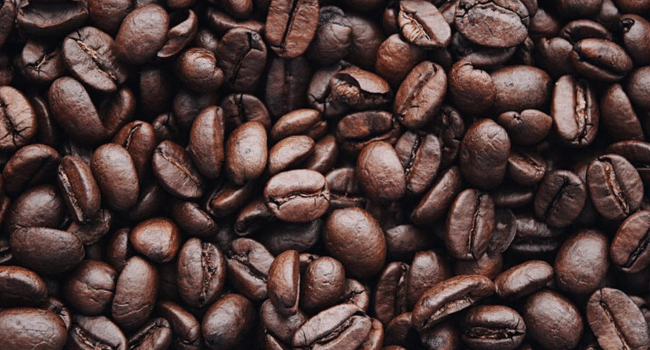Table of Contents
Coffee beans are a fundamental part of making every cup of coffee a reality. It is these beans that lead to the existence of the various tastes that make up coffee and which are enjoyed by coffee lovers. It is useful to know the types of coffee beans, their taste profiles, and how such variables as origin and roasting affect the flavor. Continue reading to immerse yourself in the multi-faceted and rich topic of coffee beans.
Understanding Coffee Bean Varieties
Two main types of coffee beans can be commercially grown. These include Arabica and Robusta and each of these has its qualities. Arabica, with its botanical name Coffea Arabica, is one of the oldest types of coffee that is recognized to be grown commercially. The coffee tree originated from the highland regions of Ethiopia and Yemen. The Arabica has a sweeter and softer taste and is slightly more acidic than the Robusta bean variety. Arabica is usually thicker with a richer taste of fruits and sugar in it and thus is commonly preferred by coffee lovers. Arabica contributes to about 60-70% of the global coffee output and is mostly cultivated at higher altitudes ranging from 600- 2,200 meters (about 1.37 mi) where rainfall is frequent.
Robusta, known as Coffea Canephora, is originally from the sub-Saharan Africa region and its cultivation is mostly done at relatively lower altitudes as compared to Arabica. Robusta beans are characterized by their bitter and bolder taste due to their higher caffeine content. They have less acidity and are often described as earthy or woody. Robusta is used in the preparation of about 40% of coffee in the whole world because it is resistant to diseases and has more yield. It can grow in warmer regions and is comparatively more immune to diseases and pests.
Exploring Coffee Bean Flavors
Coffee beans possess rich and different qualities and characteristics of flavor depending on the place of origin, the ways that the beans are processed, and the methods of roasting. The most general types of taste that are associated with the beans are fruity, flowery, nutty, chocolaty, and spicy. For instance, Kenyan coffee beans are characterized by their high acidity and blackcurrant notes, while Colombian coffee beans are chocolatey, nutty, and balanced. Selecting how the coffee is processed after it has been harvested plays a tremendous role in its taste. For example, naturally processed Ethiopian beans are known for their fruitiness due to the beans absorbing flavors from the fruit during drying. If you’re looking for a unique twist on your morning brew, you might also consider trying amazon mushroom coffee for its earthy flavor and potential health benefits.
Roasting the beans is also important in the development of flavors and tastes. Dry and intense heat for a longer period leads to oil production and thus brings about deeper or intense tastes and aroma, while short heating periods retain the beans’ lively and spirited tastes. These differences in roasting and processing give coffee drinkers a spectrum of flavors that are appreciated and distinctive with each cup of coffee.
Green Coffee Beans
There is little difference between most coffee beans and their impact on the human body after consumption, however, unroasted green coffee beans have more chlorogenic acids – an antioxidant. It has been suggested that chlorogenic acid obstructs the deterioration of the heart, controls blood glucose levels, and reduces obesity. Green coffee bean extract containing chlorogenic acid is a popular additive in the substances that burn fat, often in combination with other supplements.
Ingesting green coffee beans raw is also possible, which can be yet another advantage, as these beans do not require any special preparation: chewing them thoroughly will suffice. Additionally, when considering the storage and usage of these beans, it’s essential to know how long do green coffee beans last to maintain their freshness and potency. Furthermore, green coffee beans are important to roasteries because they enable them to develop roast types that meet market needs. While brewed coffee cannot be prepared from raw green coffee beans, they have their economic significance in the world due to their health potential and variety of uses.
Selecting and Storing Coffee Beans
Due to the kind of beans and tastes available, choosing the right coffee beans can be very overwhelming. To get started with choosing your beans, emphasize freshness by inspecting the “roasted” tag and choosing the latest stock. Also, think about your taste and the brewing method you like most. A light roast profile is recommended for pour over methods, while darker espresso roasts stand up well to steamed milk.
After that, transfer the beans to an opaque, light-proof, and airtight container to protect them from light, air, heat, and moisture. Do not store it in the refrigerator or the freezer – it is better to use a cool and dry place such as a pantry. Only store the beans in a refrigerator or a freezer if you’re planning on storing the beans for long-term use. However, make sure that the jar or container is properly sealed. It is recommended that beans should be consumed within 2-4 weeks of the roast date for improved taste.
Conclusion
The versatility of the coffee beans can best be described by the flavors, aromas, and experiences available in a cup of coffee. If possible, one should switch between different types of beans or different geographical origins of the same type of beans. Factors such as processing, the level of roast, and brewing all affect the end character of a bean. Try various permutations to find the right recipe for your preferred coffee fix.
Image Source – Pexels
